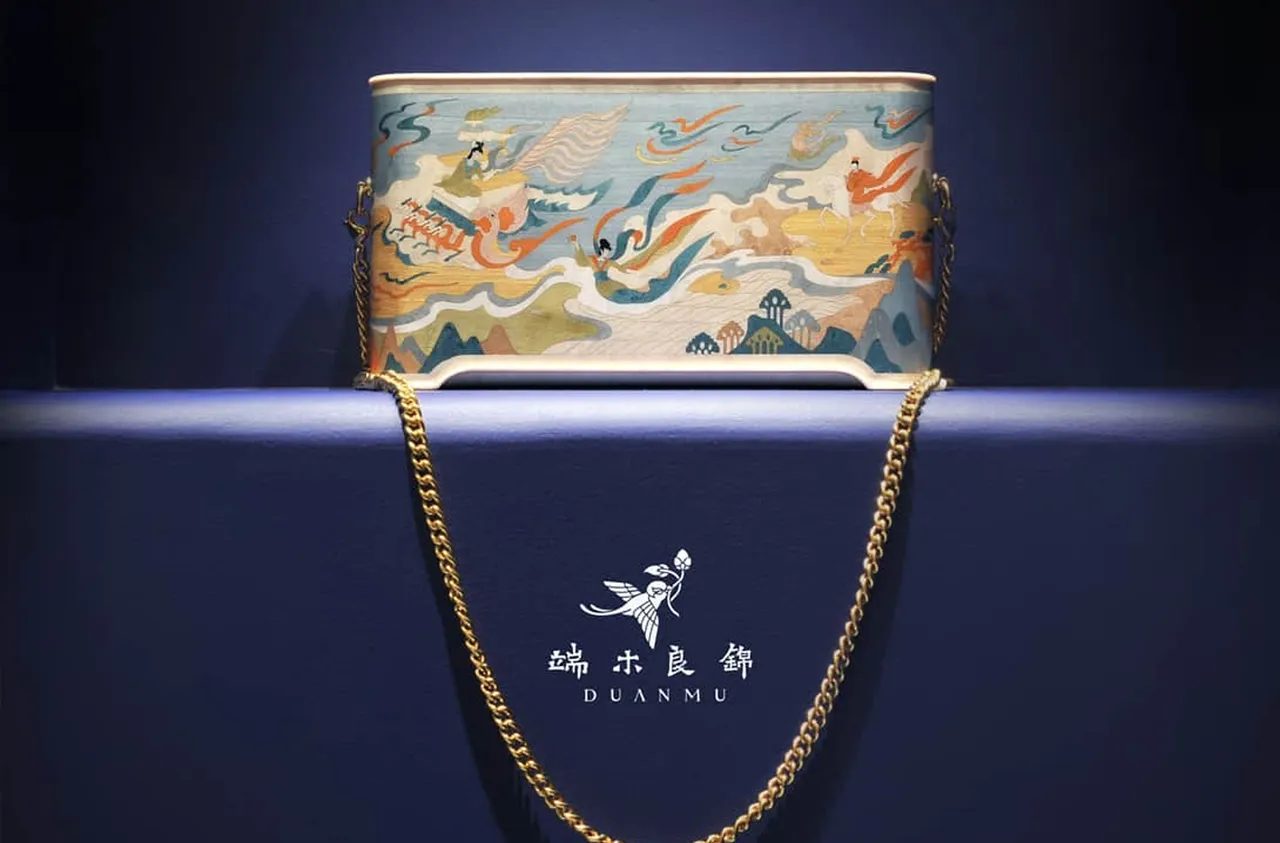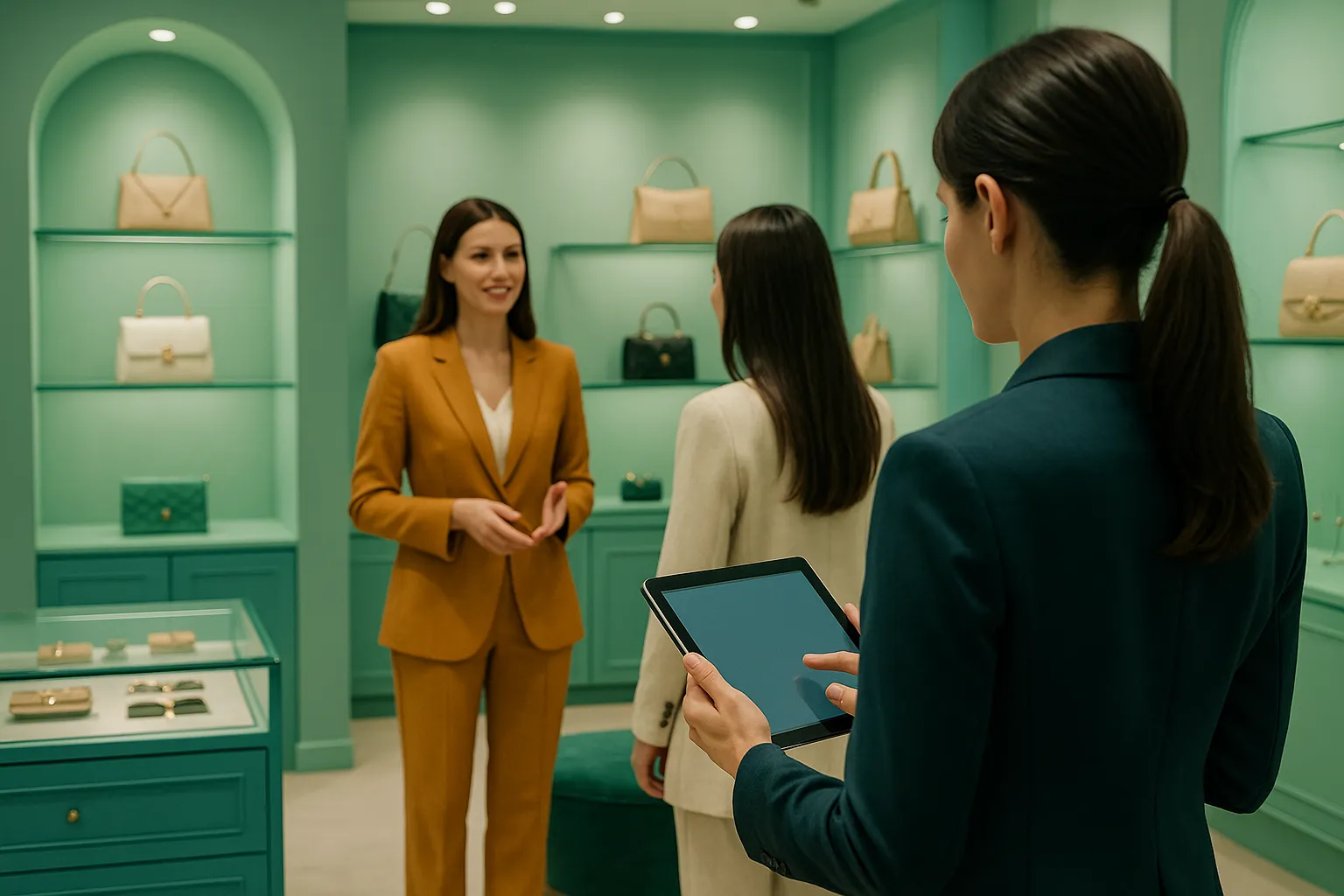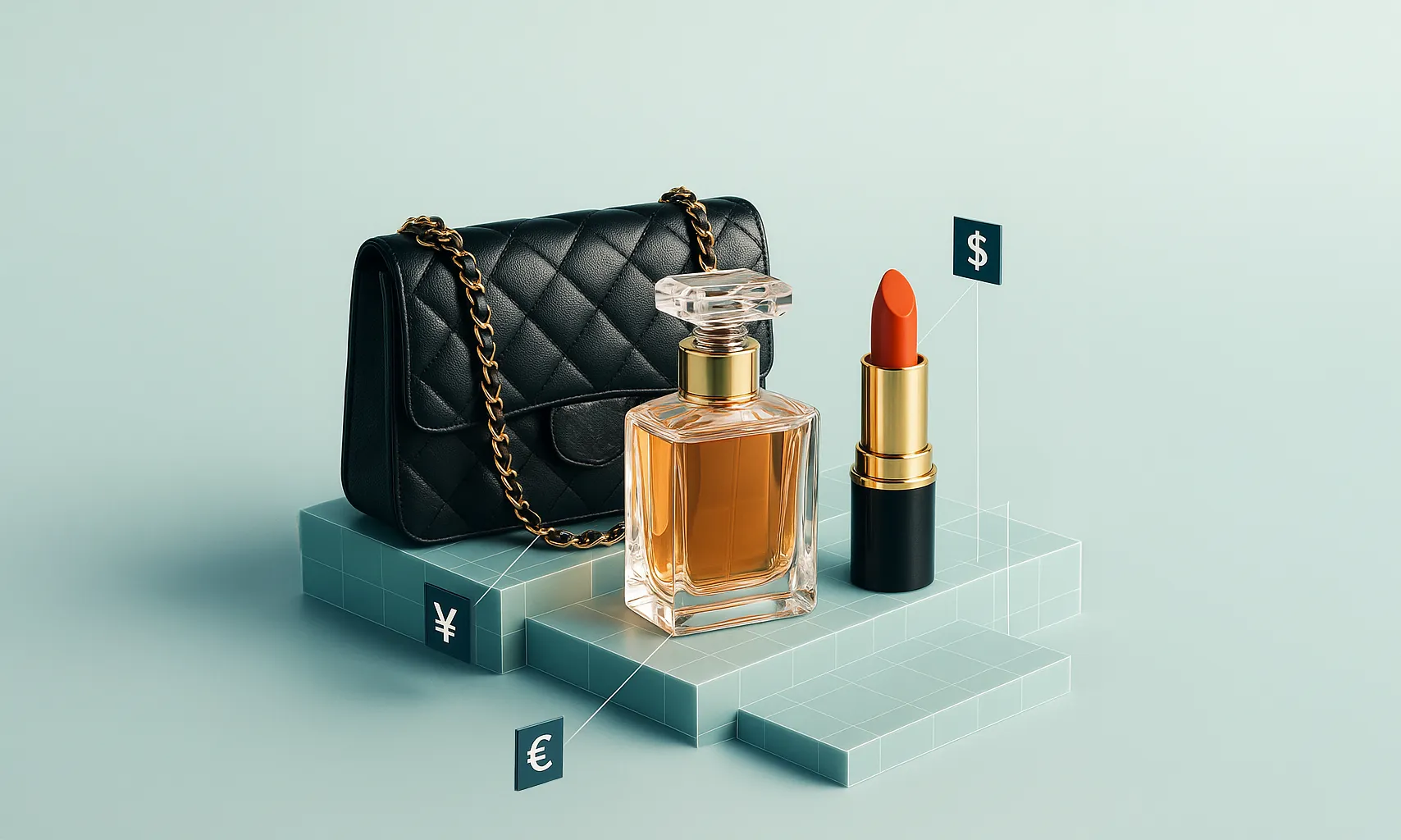Distance Selling In Luxury Brands: Struggles and Success
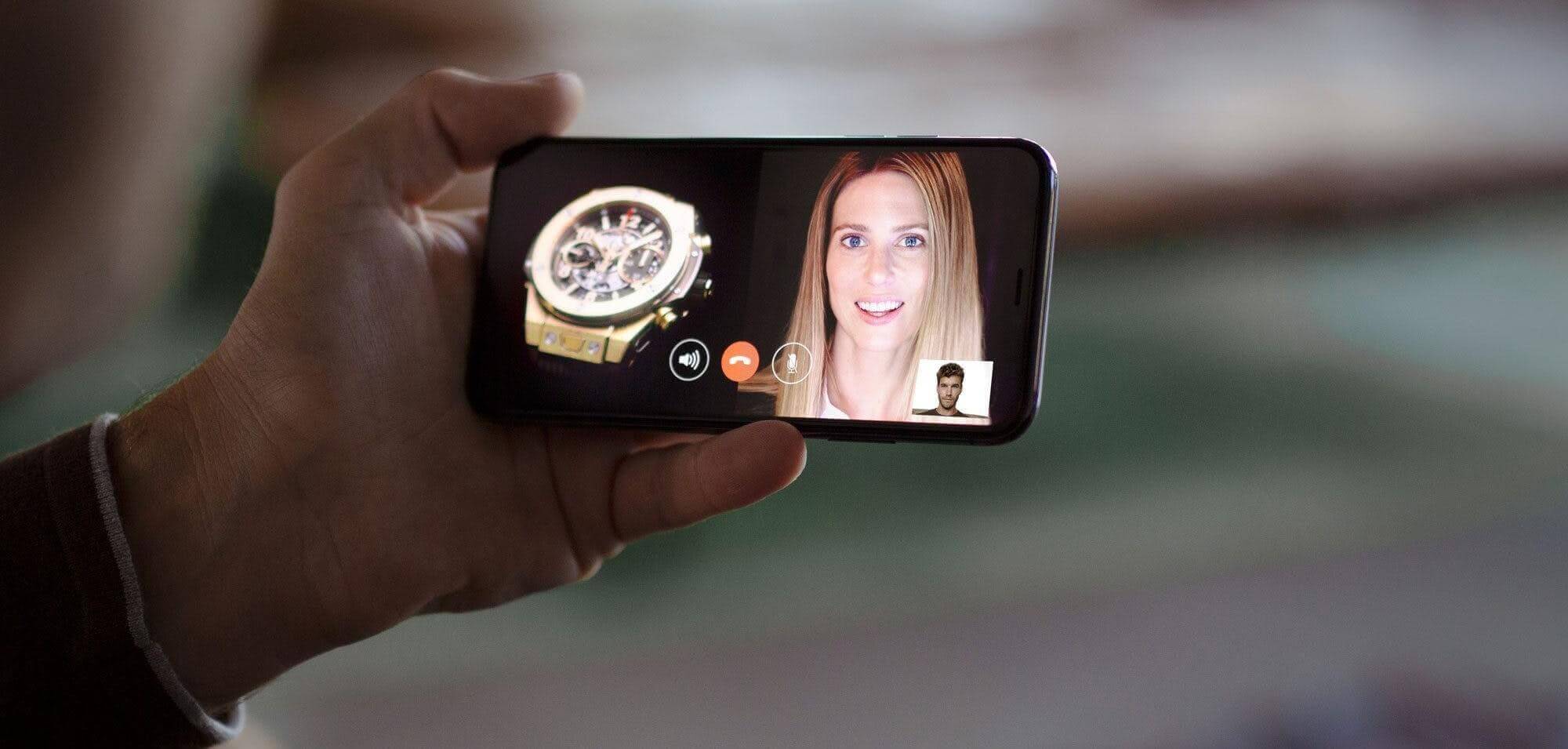
Source: Hublot
2020 was an unquestionably difficult year. In order to survive, businesses across different industries, including those in the luxury sector, were forced to pivot and quickly adapt to pandemic-induced changes and challenges.
With our years of experience in the luxury retail industry, my colleague Cécilia and I were especially curious about how this sector endured the monumental shifts in the COVID landscape. We could clearly gauge that, despite the negative effects of the pandemic, the rapid changes in the business environment were presenting brands with good opportunities. We believed that businesses that can take bold and positive actions will put themselves in a strong position to thrive amidst the new circumstances.
Driven by our curiosity, we did a thorough investigation on the new way of shopping that affluent customers and luxury retailers were forced into: Luxury Distance Selling.
The result? The Watch & Jewelry Maison’s Benchmark Pilot.
We looked at the high-end luxury Maisons and evaluated how they were implementing distance selling. Distance selling is different from the typical e-commerce experience. It involves offering customers a one-on-one consultation with an advisor using video conferencing. We could more likely describe it as the virtual counterpart of the premium service experience you’d get when shopping in a high-end retail store.
Distance selling is an approach that was urgently deployed in response to the effects of country-wide lockdowns: store closures and severe constraints on interactions. Although it doesn’t create the exact same customer experience produced by face-to-face servicing, it does offer exciting opportunities such as:
- Creating a seamless multichannel experience.
- Connecting with local clientele through qualitative one-to-one interactions.
- Establishing new relationships with customers from other towns, cities and countries.
- Offering a personalised experience through live demonstrations
- Selling during low traffic periods and outside of usual working hours
To assess how distance sales has been adopted, we conducted 330 evaluations in the UK and France, covering 11 top brands. We identified what they were doing well and the areas that required improvement.
The quality of the interactions varied from good to bad, and the reasons were very versatile. In some cases, calls were carried out on an unstable network or with an unsteady camera. In others, advisors seemed to be unprepared to interact with their customers and were not confident enough to complete a sale over a webcam.
KEY INSIGHTS
So, what exactly did our research unearth?
The luxury sector has yet to fully embrace e-commerce, and there has always been a general perception that the latter isn’t ideal for exclusive high-end brands. Our findings proved that this is not exactly the case. What if online luxury just needs to be approached differently?
Could distance selling be the suitable approach for luxury goods? Well, if it is, then luxury brands definitely need to invest in improving the remote and online video experience delivery.
Exhibit 1: Watch and Jewelry Distance Sales Pilot: Customer Experience Evaluation
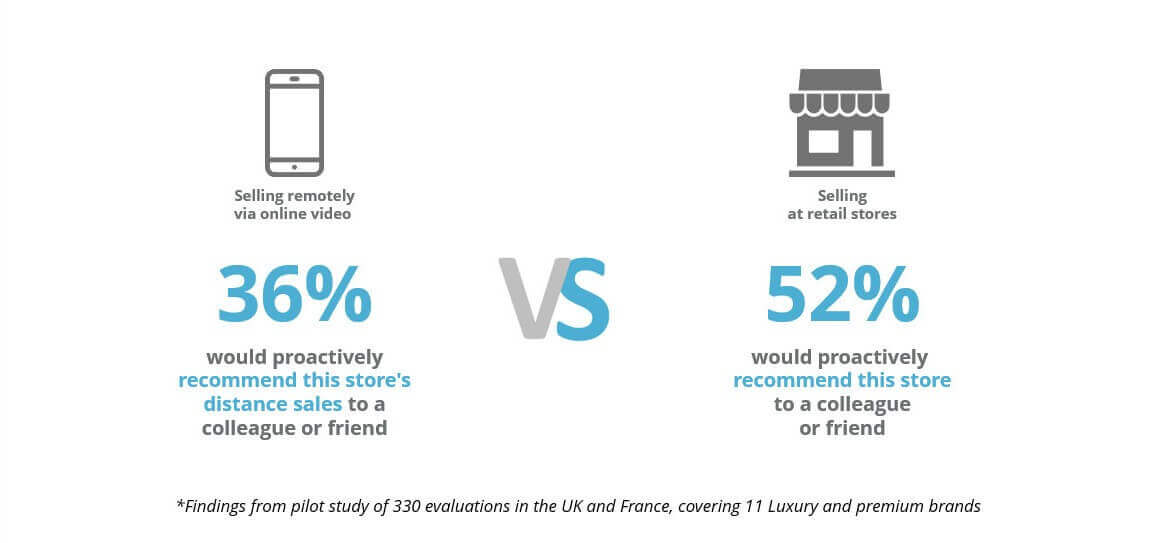
The 16-point difference between distance selling and retail confirmed our earlier suspicions that the brands still had a long way to go before being able to recreate the success of the face-to-face approach. (Reference: Exhibit 1)
There was a 38-point difference between the top and worst performing player. This is a massive variation considering that these are competitors.
There were also regional variations: The UK outperformed France by 14 points, clearly indicating that the markets are distinct and need to be treated individually.
We gathered insights at every stage of the customer journey — before, during, and after the appointment.
Before the appointment
Losing customer satisfaction at the time of booking an appointment is going to complicate the rest of the mission.
67% of the clients rated the booking process as smooth. This sounds good until you realise that more than a quarter found the process to be problematic.
16% did not receive confirmation of their appointment. This creates frustration, sets an unprofessional tone and hardly makes the customer feel special. It also increases the likelihood of them forgetting about the meeting.
During the appointment
Surprisingly, most advisors had trouble creating stable, high-quality video calls. They failed to use simple mobile equipment, such as a stabilizer or a stand, which are simple solutions that could have significantly improved the output and ease of video call experiences.
Emotional connection over video calls also revealed to be an important challenge. Demonstrating empathy, expertise and passion during distance selling doesn’t come naturally to a lot of the advisors. They clearly needed to be more trained and better equipped to take on this new approach in the best way possible.
Exhibit 2 – Watch and Jewelry Distance Sales Pilot: The use of mobile stands to stabilize videos
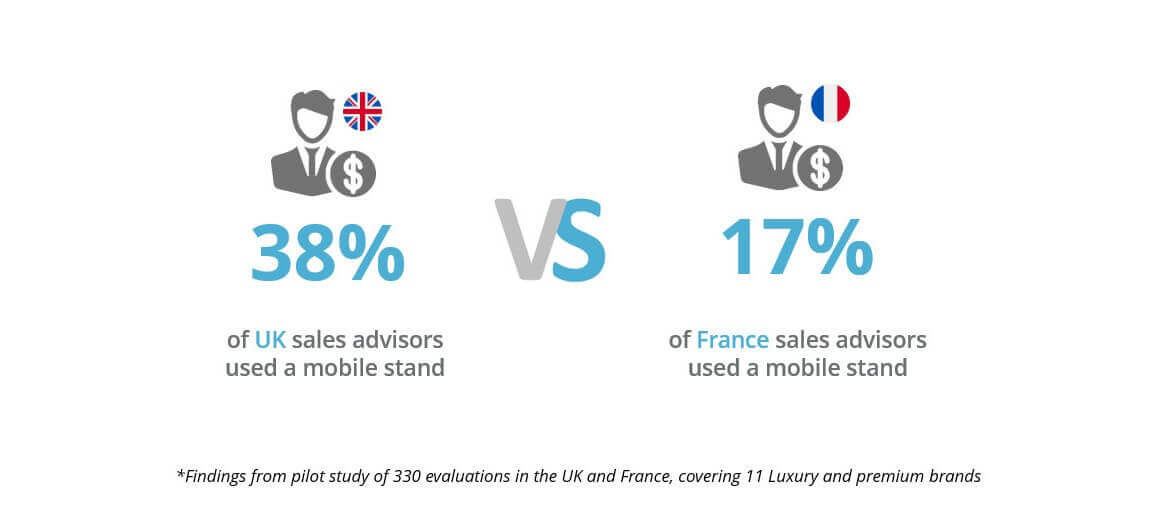
After the appointment
In several cases, we observed that some advisors do not clearly explain the next steps to their clients at the end of their call. This leaves the call open-ended and vague. The customer won’t know what to expect.
There are also numerous cases where the end of the call was the end of the process. Advisors did not follow-up with customers after their first contact and, therefore, missed the opportunity to request any necessary additional information, or just stay connected with their clientele.
Exhibit 3: Watch and Jewelry Distance Sales Pilot: Follow-up calls post appointments
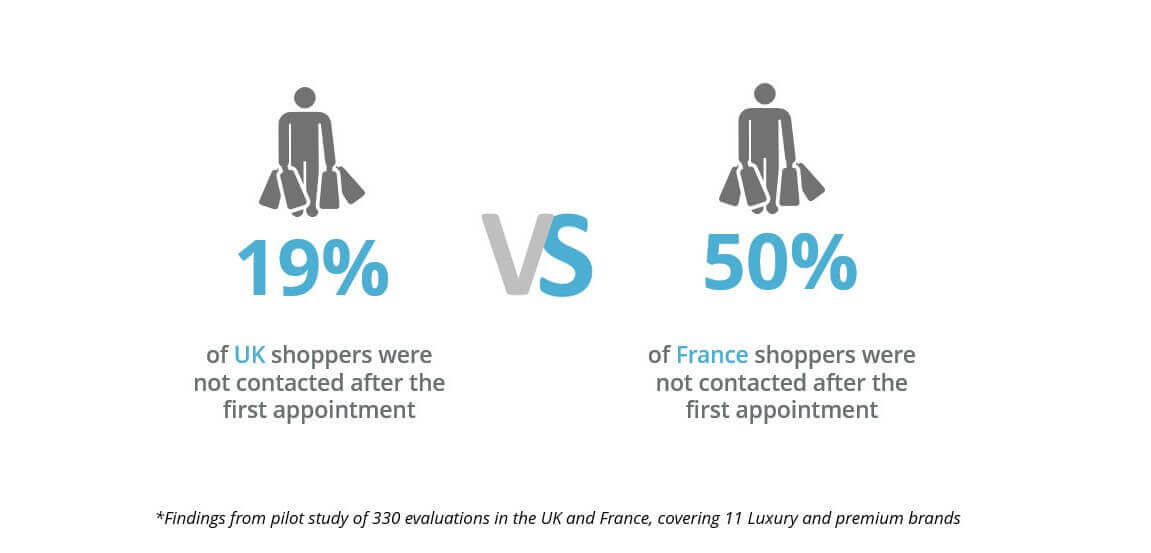
RECOMMENDATIONS
The luxury industry is evolving, and our research showed that high-end brands are adapting to changes with different degrees of success. From our findings, we were able to put together a set of recommendations that can help brands create impactful and positive distant sales experiences.
Before the appointment
Book an appointment with agility but not immediately
One significant factor that came out was the difference in the experience of customers who were offered an appointment at a future date and of those who were offered an immediate appointment.
This difference can be summarized in one word: preparation. A scheduled appointment brings in customers who can set aside time and give their undivided attention to the advisor. It also allows the advisor to prepare, do some fact-finding and tailor their call around each customer’s profile and needs.
During the appointment
Use the right technology that can enhance the experience.
Advisorswho used a mobile stand or a stabilizer had quality video calls and communicated with their customers without external distractions.
Base questions around the client.
This is simple yet so impactful. Personalising questions immediately increases engagement and transforms the sales call into a one-on-one conversation. It enables the advisor to discover important information about the customer that they can leverage to present a satisfactory bespoke offer.
Demonstrate expertise and passion about the products and brand.
Storytelling is a powerful tool that helps the brand engage each client and immerse them into its story and history.
Upsell and cross-sell.
Capitalize on the opportunity of having the client’s full attention by using it to offer additional products and services.
After the appointment
Next steps must always be well explained at the end of the first call, including when and how the next contact will be made.
Do not miss following up after the first call. The end of the call is not the end of the process. Shortly after each call, the advisor should contact the customer. It’s an opportunity to thank them and to remind them about any additional information requested during the appointment.
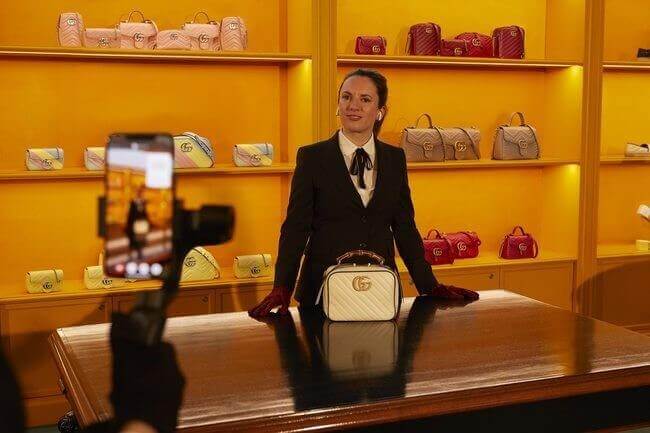
Source: Gucci
WRAP-UP: 10 QUICK WINS
Training advisors in ensuring superb pre-appointment, appointment, and post-appointment client experience is essential in achieving luxury brand remote sales success. To wrap up, we’re sharing 10 quick-win tips that can help advisors excel in online distance selling:
1. Connect from inside the boutique.
2. Use a mobile stand or a stabilizer during video calls.
3. Book an appointment.
4. Discover more about the customer during the pre-appointment call.
5. Focus on client-centric questioning.
6. Leverage the power of stories.
7. Upsell.
8. Collect client contact information.
9. Remember to mention the next steps.
10. Follow up consistently.
